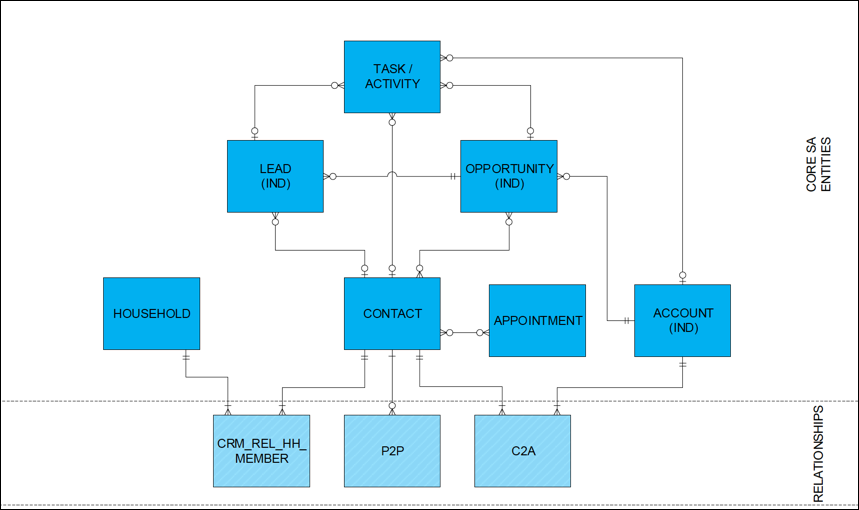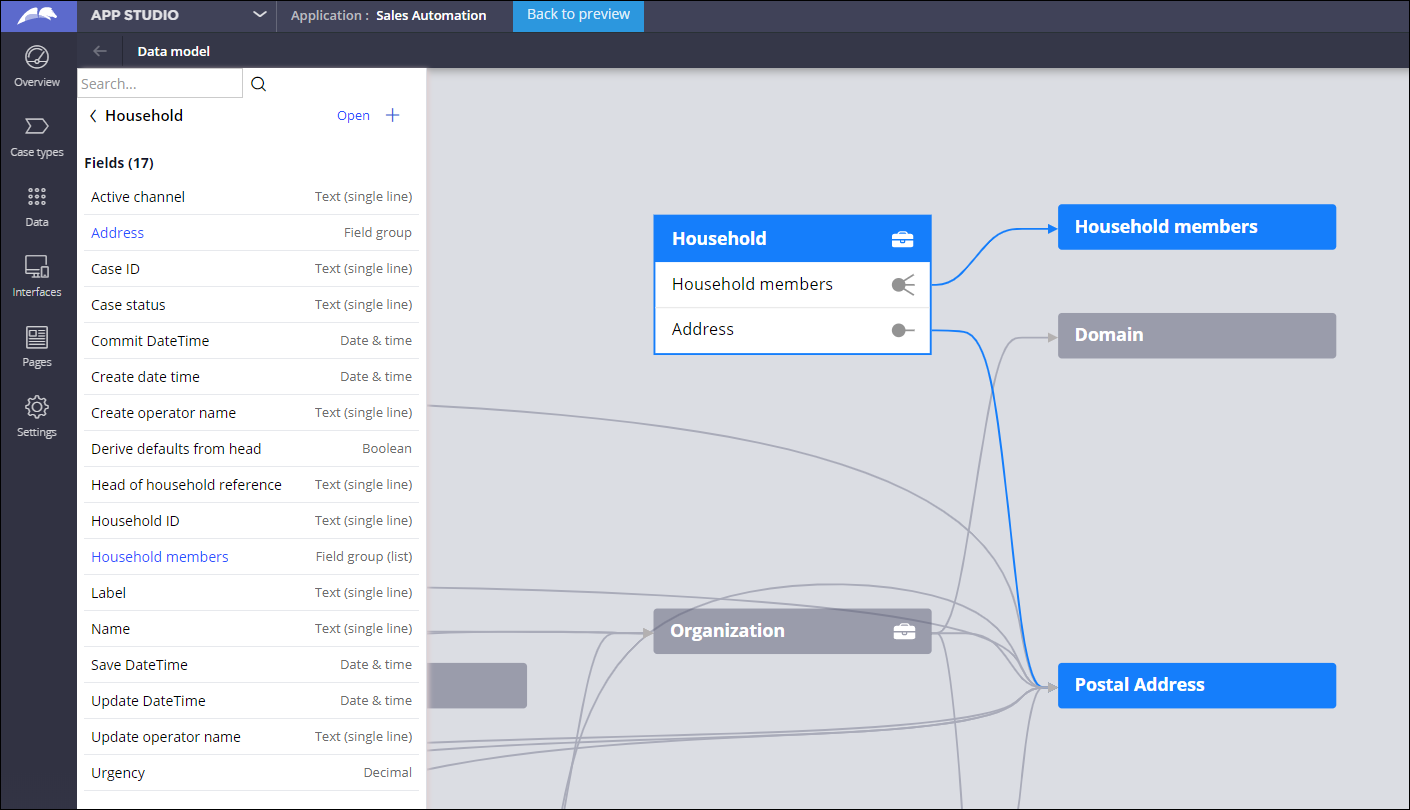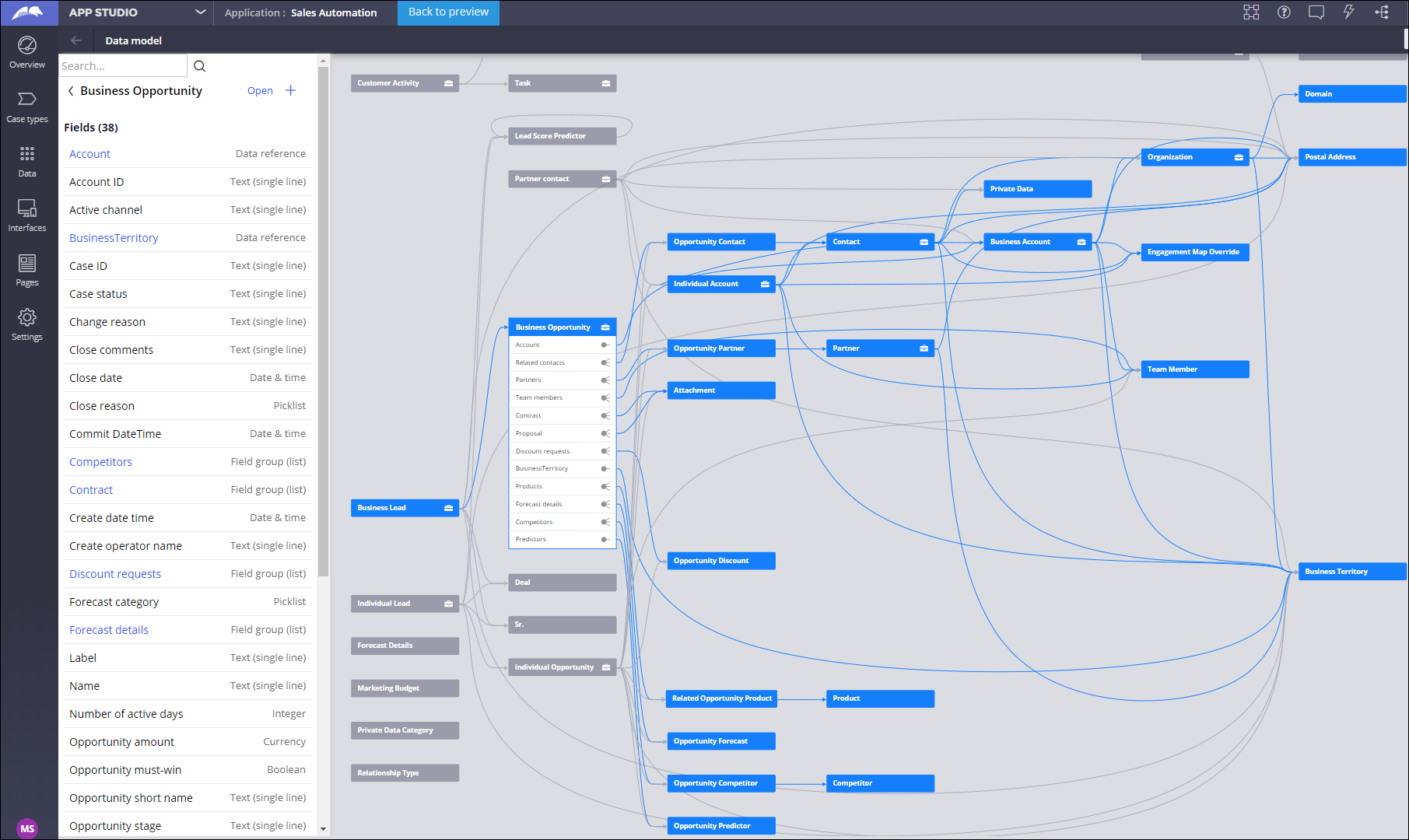Pega Sales Automation data model (7.4-8.4)
The Pega Sales Automation™ data model consists of a set of standard business objects that support the sales process. The business objects have unique attributes, for example, account numbers, contact names, or operator IDs, and they interact with other business objects as they move through the sales life cycle.
Pega Sales Automation includes the following business objects:
- Account
- Activity
- Appointment
- Contact
- Household
- Lead
- Opportunity
- Organization
- Task
Business objects depend on the selling mode that you select for your implementation. In Pega Sales Automation, you can use the following selling modes:
- Business-to-business (B2B) – if you are selling products and services to other businesses.
- Business-to-consumer (B2C) – if you are selling products and services directly to individual consumers.
- Mixed mode – if you are selling products to both individual consumers and to other businesses.
The following entity relationship diagram shows the Pega Sales Automation business objects that are used in the B2B selling mode and the relationships between these objects:

The following entity relationship diagram shows the Pega Sales Automation business objects that are used in the B2C selling mode and the relationships between the objects:

The mixed selling mode includes business objects from both B2B and B2C entity diagrams.
The following entity relationship diagram shows the Pega Sales Automation core entities and the class inheritance relationships between the objects:

Viewing the data model in App Studio
You can use the Pega Sales Automation data model to see all of the case types and data classes with their relationships as a graphic. This entity relationship visualization can help you to understand all of the dependencies between the Pega Sales Automation elements and decide how to customize your application. For more information about the data model, see Exploring the data model.
To view the data model, in the navigation panel of App Studio, click Data > Data model.
The system generates relationships between entities through the definition of page and page-list properties that are marked as relevant records. By design, these properties are either embedded in the parent record or refer to a data page.
Examples
To review the dependencies structure as shown in the following image, on the left list view, click Household. A circle with one line indicates a page property and a circle with three lines indicates a page list property.

You can also click Business Opportunity on the graphic to see the expanded view with page list properties, if applicable.

To view a list of relevant records, in the header of Dev Studio, click Configure > Application > Inventory > Relevant Records. Properties that are defined as relevant records can be inherited. For more information, see Relevant records.
Previous topic Configuring queue processors in Pega Sales Automation 8.3 Next topic Integrating Pega Sales Automation with Hoover's Dun & Bradstreet Direct 2.0 Data connector (7.4-8.4)
